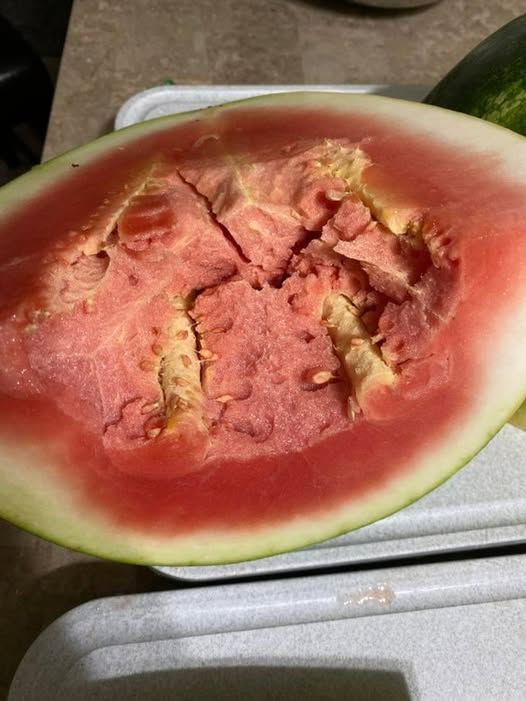
Watermelons are synonymous with summer, offering a refreshing escape from the heat. But encountering hard, stem-like formations inside can be both puzzling and disappointing. Understanding the reasons behind this phenomenon can help you select the best melons and ensure a sweet, juicy experience every time.
What Are the Hard Stems Inside a Watermelon?
These hard structures are actually malformed flesh resulting from the fruit’s developmental issues. They aren’t true stems but areas where the flesh didn’t develop properly, leading to a firmer, less palatable texture.
Primary Cause: Growth Stress
The main culprit behind these hard formations is stress during the watermelon’s growth phase. Factors such as inconsistent watering, extreme temperatures, or nutrient deficiencies can disrupt normal development, causing these hard areas to form.
Impact of Drought Conditions
Watermelons require consistent moisture to develop their signature juicy texture. Drought or irregular watering can lead to internal defects, including hard, undeveloped flesh. Ensuring a steady water supply is crucial for proper fruit development.
Nutrient Deficiencies and Their Effects
A lack of essential nutrients, particularly calcium, can cause cellular abnormalities in the fruit, leading to hard spots. Maintaining balanced soil nutrition helps in producing uniformly soft and sweet watermelons.
Is It Safe to Eat Watermelons with Hard Stems Inside?
While technically safe to consume, these hard areas are often tasteless and have an unpleasant texture. It’s best to remove them and enjoy the properly developed parts of the fruit.
Preventing Hard Stems: Tips for Gardeners
- Consistent Watering: Ensure your watermelon plants receive regular and adequate water, especially during dry spells.
- Soil Health: Test soil regularly and amend it to provide balanced nutrients, focusing on calcium levels.
- Mulching: Apply mulch around plants to retain moisture and regulate soil temperature.
- Monitoring: Keep an eye on weather conditions and provide shade or additional water during extreme heat to reduce plant stress.
Selecting the Best Watermelon: Tips for Shoppers
- Uniform Shape: Choose watermelons that are symmetrical without irregular bumps, indicating even growth.
- Field Spot: Look for a creamy yellow spot where the melon rested on the ground; a white spot may indicate under-ripeness.
- Sound Test: Tap the watermelon; a deep, hollow sound suggests ripeness, while a dull thud may indicate internal issues.
Conclusion
Encountering hard, stem-like structures inside a watermelon can be disappointing, but understanding their origin helps in prevention and selection. By recognizing the signs of a well-developed watermelon and ensuring proper growing conditions, you can enjoy the sweet, juicy experience that makes this fruit a summertime favorite.





